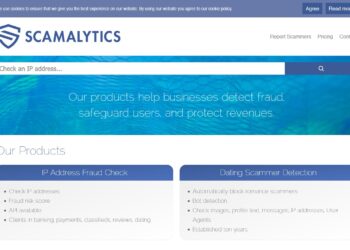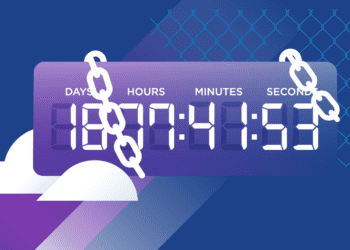Over the weekend, FTX noticed some unauthorized crypto wallet transactions.
The hacking of one of the largest FTX cryptocurrency exchanges was the final blow to the organization.
Only hours later, they announced that they were filing for bankruptcy after threat actors stole over $477 million in crypto funds.
This is just one of the many examples of high-profile victims whose web application has been targeted by cybercriminals, and whose case led to disastrous financial damage or a harmed reputation beyond repair.
Whether it’s the result of internal or external hacking activity, companies have a difficult time getting back on their feet following such incidents.
Many companies nowadays hold massive amounts of their user’s funds that can be stolen or sensitive data that can be leaked.
The high cost of repairing the infrastructure following the attack, strengthening the security, and falling behind with work within the organization are just some of the factors that make or break a business following the incident.
This is especially true for smaller companies that have even fewer funds to allocate toward cybersecurity.
How can organizations protect their web applications from cybercrime, what are some top threats to be wary of, what is WAAP and does it help protect web apps, and why can hackers bypass many traditional tools?
It’s time to find out.
Top Threats For Website Applications
According to the OWASP Top 10 document that lists top risks for web applications, common threats include:
- Broken access control
- Cryptographic failures
- Injection
- Insecure design
- Security misconfiguration
- Vulnerable and outdated components
- Identification and authentication failures
- Software and data integrity failures
- Security logging and monitoring failures
- Server-side request forgery
As a result of these vulnerabilities existing within the web application, the business is open to a possible data breach, unauthorized access to user accounts that allow criminals deeper movement in the network, Distributed Denial of Service (DDoS) attacks, and more.
Those are the top 10 weaknesses most likely to be exploited by hackers. However, there are more issues that businesses should be prepared for — including zero-day threats, and unknown weaknesses that put the business at risk.
How can businesses protect their website applications?
Website Protection Solutions
The security tools available for website protection nowadays include:
- Having Web Application Firewalls (WAF)
- Employing zero trust methodology
- Enforcing strong passwords
- Managing security often
- Using Web Application and API protection (WAAP)
WAF guards websites by filtering potentially malicious HTTP traffic and allowing legitimate traffic — blocking it or letting it through based on the pre-set rules.
Zero trust methodology is based on the principle known as “trust but verify”. In practice, it could mean adding more steps that the person has to pass when logging into their account, or restriction of access based on their role in the company.
Weak credentials that are reused and easy to crack cause as many as 80% of data breaches. A majority of attacks can be avoided with the use of stronger passwords.
Just having the tools that guard a company is not enough. They also have to be regularly managed with software that can scan, test, analyze the data, and follow up with an actionable report that highlights critical risks. It has to be improved at all times.
But what about WAAP?
What Is WAAP?
WAAP is a cybersecurity solution made for web applications. This cloud-based service has been imagined as a way of protecting complex cloud infrastructures and Application Programming Interfaces (APIs) that are prone to vulnerabilities and hacking exploits.
Components such as API are interesting to cybercriminals because they’re available via the public internet, and they can use it to get the sensitive information of app users.
To offer thorough app security, WAAP combines the functions of multiple security tools such as DDoS protection, Next Generation WAF, Runtime Application Self Protection, Malicious bot protection, and API protection.
That is, it covers application layer protection, guards the assets in real-time using artificial intelligence, and it can both isolate and stop the attack before it does damage to the app.
Also, it adds more robust inspection, continual learning about the organization to use that data while improving security, analysis of encrypted traffic that contains sensitive information, and detailed analytics of its findings.
In a nutshell, the WAAP solution from a reputable vendor offers application and data protection without sacrificing functionality.
Where Do Traditional Tools Fall Short?
Well-known solutions such as WAF can protect the company from certain attacks, but they are limited in an environment that can change in minutes or that is vulnerable because of insider threats.
For instance, WAF also requires more manual work from already overworked IT teams. The settings have to be changed and adjusted based on the latest findings. That is not practical for applications that are continually shifting.
Another way that WAF falls short is the adoption of a cloud environment that urges companies to have solutions that cater specifically to cloud-based infrastructures.
What’s more, businesses also feature complex multi-cloud structures that combine components from multiple vendors and that are difficult to track and defend — even with solutions crafted for such architectures.
Although WAF can offer basic protection, that is also the software that hasn’t changed or improved significantly over the years of use and internet changes.
As a result, more and more companies turn to solutions that are designed for today’s websites, that can protect the application against attacks that are growing in frequency and sophistication.
Final Thoughts
Thorough and robust protection of the website application is essential for any business that has an online presence — especially if they offer their services through them.
Multiple layers of security should include the right tools that can discover and block hacking threats, policies that are based on the principles such as zero trust, management tools, and strong passwords.
It’s also important to have a tool such as WAAP that is made to protect the modern-day web application and keep up with their hectic changes.






